Ertach Kernow - Cornish road trip around West Penwith
Regular readers may remember me writing about the achievements of the Penwith Landscape Partnership with their online PLEN (Penwith Landscape Exploration Network) project. I though that I would use the PLEN website resources to plan a tour for some young folk. It’s so important Cornish history, culture and wider environmental heritage is shared to a wider audience especially younger people. Fortunately, schools are now being far more proactive in teaching Cornish history, but not always so to older teenagers at secondary school level. I was pleased to take a couple of lads Josh and Leevi, who are involved in our Cornish Cultural Hub based around Newquay Museum, on a day tour around Penwith to visit some of Cornwall’s ancient sites. Newquay is conveniently placed in Cornwall to not be too far away from anywhere in Cornwall and this is one of its strengths as a place to stay for cultural tourists. Our trip took us through Penzance where they had a brief overview of the town before heading out to visit various sites located on the PLEN map.
Set in a lichen and moss covered woodland Madron’s holy well and baptistry together with its cloutie tree was something rather different for the lads to see. It was a nice bright sunny day, so didn’t seem quite as spooky as I’d encountered on previous visits with leaning trees entwined with thick ivy and heavy surrounding undergrowth. Access to the well was boggy and there seemed a mysterious presence surrounding it. On the main path we came to the cloutie tree, less clouties than on earlier visits, but perhaps it’s early in the season even for local visitors. So nice to see that a cloutie showing the colours of Ukraine could be seen hanging from the tree. The Baptistry dedicated to St Madern is believed to have been built in the 12th century and probably on the site of an earlier Celtic chapel. As with many ancient religious sites the holy well and surrounding area was almost certainly originally the site of pagan Celtic worship which commonly involved dedications to a water deity.
Then onto Lanyon Quoit. Unfortunately, a stop at the Lanyon Tea Room was not possible due to them having to close as their roof had been blown off during the recent storms. Lanyon Quoit is one of those iconic images that is used to help promote Cornwall and surprisingly not one visited by as many Cornish folk as might be expected. Standing on three upright stones it did until 1815 include a fourth non-supporting upright, as recorded in 1754 by antiquarian Dr William Borlase. In 1815 there was a terrific storm that saw the capstone collapse, probably due to undermining and loosening of soil by those looking for treasure or burial remains. It was obviously a site of interest to local folk as by 1824 they’d raised funds to have the quoit repaired that year. Although the Royal Navy team did their best it has now become apparent that it was not restored quite as it was previously. There are a number of other stones within the area of the quoit perhaps part of a larger Neolithic burial site.
On our way to Men an Tol we had a chat with a couple from Kent travelling around Penwith on a 1961 restored scooter. Certainly, the type of quality tourists that Cornwall needs to encourage, who are interested in Cornwall’s history and culture and very mindful of the environment they enjoy here. So much so they visit multiple times and even take their recycling back to Kent, because their rented holiday accommodation does not provide recycling facilities. Men an Tol is one of those strange, holed stones that are seen elsewhere in Cornwall, although this along with the Tolven Stone near Gweek are the only ones large enough to pass through. The translation from Cornish of Men an Tol is hole the stone and it was again Dr Borlase who first illustrated it during the mid-18th century. Later renowned Cornish archaeological artist J T Blight drew it in 1864 stating 'From the positions of these stones it seems probable that they are the remains of a circle'. Further evaluation during the 1990’s showed that there were hidden stones beneath the surface and that these would have formed a circle, albeit with some stones missing, as Blight had suggested. The holed stone is thought to date from the Neolithic period and the later stone circle from the later Bronze Age. Later use was made of the holed stone with many believing that a child passed through would be healed of rickets or providing relief to back pains. Who knows what else?
A pleasant lunchtime stop at St Just saw us visit the Plen an Gwary where the lads were given an overview of the history and touching on the Ordinalia recently performed there. Believed to be the oldest working theatre in Britain and a scheduled ancient monument it was used from the late fourteenth until the 17th centuries for the performance of religious community miracle plays in the Cornish language. Today it is used for a variety of activities including the ever-popular annual St Just Lafrowda Festival that has been run since 1996. The return of the Ordinalia performances during 2021 saw its going back to one of its original historic uses. Whilst there we visited the Kings Arms in St Just’s Market Square, a lovely old fashioned Cornish pub, where we had an enjoyable meal with friendly service.
The Cornish Mining World Heritage Site covers large areas of Cornwall and into Devon, with the vicinity around St Just teeming with historic industrial places to visit. We therefore continued our trip to take in the splendid views of the Crown mine engine houses at Botallack and explore the surrounding mine building ruins. This was an opportunity to share something of the history of Botallack and of Cornish mining in general with Josh and Leevi. These ruins are probably amongst the most iconic views of Cornish mining and industrial 19th century Cornwall and have many stories to tell. The engine houses, low on the cliffs, are the most photographed but there are many more ruins of buildings on the cliff top to explore, there were a total of eleven engine houses. The Crown engine houses were constructed around 1815 to allow water to be pumped from workings under the ocean. Beneath ground the shafts reached over 2,000 feet, extending under the ocean by a mile. These mines were begun in 1721 and became so famous that even members of the royal family, later King Edward VII and Queen Alexandra when Prince and Princess of Wales, visited in 1865. Author of The Coral Island R M Ballantyne visited and stayed three months in 1868 to research and write his novel Deep Down. This was inspired by Wilkie Collins who had visited in 1851 and included his experiences in his book Rambles Beyond Railways. The Count House at Botallack has another claim to fame besides that of mining. For a while in the 1960’s it was home to the Count House Folk Music Club which saw a resurgence of Cornish folk music and included musicians such as John Langford and the debut of Cornwall’s own Brenda Wooton.
Time had almost run out for Josh, Leevi and myself in our trip around West Penwith, but there was time for a final stop at Carn Euny. Parking at the small carpark we enjoyed a nice walk via green route to the ancient village. This Iron Age and Romano-British site is managed by the Cornwall Heritage Trust and is one of the best-preserved ancient village sites in Cornwall and south-west England. Dating from about 400 BCE the surviving ruins mark later courtyard houses built around the start of the first millennium which replaced probable timber and turf buildings. Historic field boundaries can be found around this area illustrating their farming achievements. The settlement is thought to have been abandoned around 400 CE, no evidence of why have been found. Cornwall Heritage Trust have set up a number of useful informative interpretation boards around the ancient village telling its story. There is on this site an underground fogou one of a few that seem to be limited to west Cornwall where less than 15 have been found. Many of the field boundaries within this far western part of Cornwall have been dated to around 4,000 years ago during the Neolithic period. These enclosed small fields would have suited early animal management and crop cultivation carried out by hand. We returned via the blue route from where there was lovely views over the countryside as well as flowering wild plants to appreciate.
Our homeward journey saw a trip through Hayle that developed during the 18th century for the import of coal and export of copper ore. The establishment of a foundry by John Harvey in 1779 and onward development of engineering works gradually established Hayle as an important Cornish town. All in all, an enjoyable day trip and first of perhaps more that will encourage the two young men and others into taking greater interest in travelling around Cornwall and appreciating its wider historic and environmental heritage.
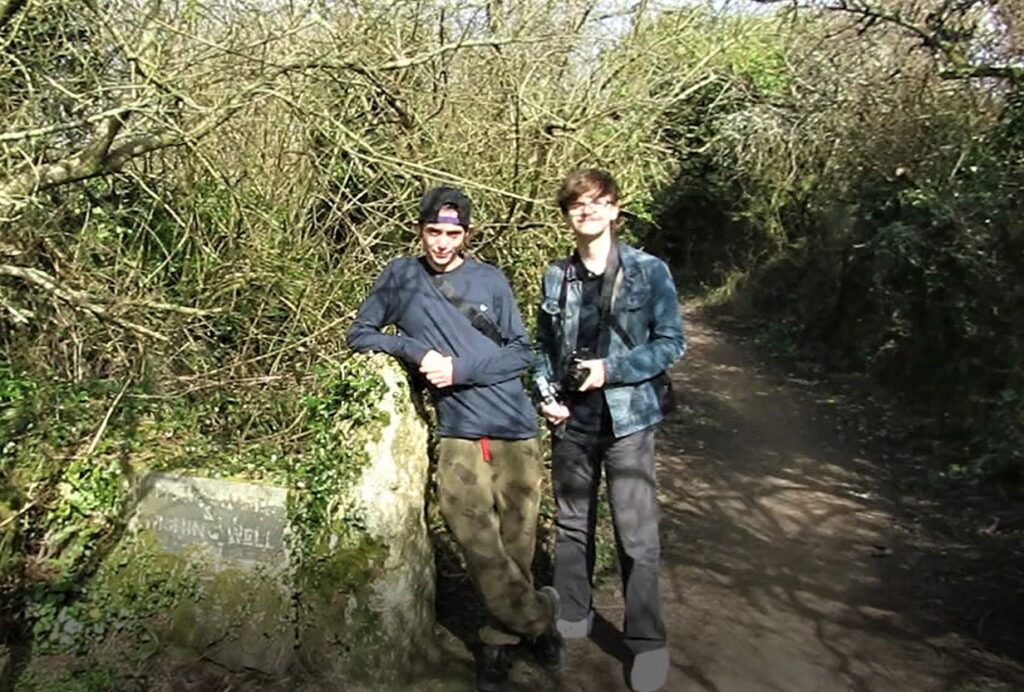
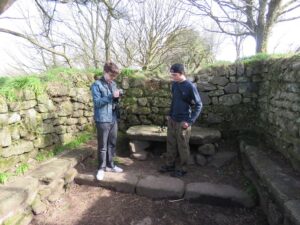
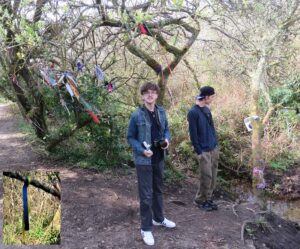
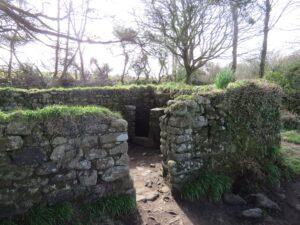
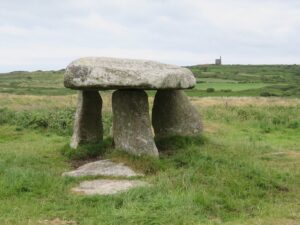
![Lanyon Quoit by William Borlase [1] Lanyon Quoit by William Borlase](https://www.cornwallheritage.com/wp-content/uploads/2022/04/Lanyon-Quoit-by-William-Borlase-1-300x173.jpg)
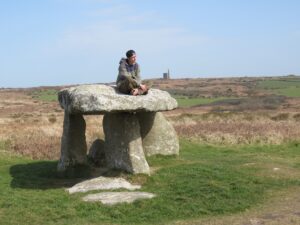

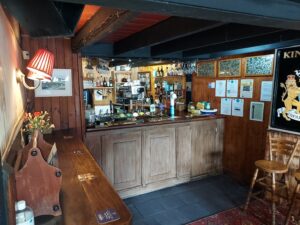
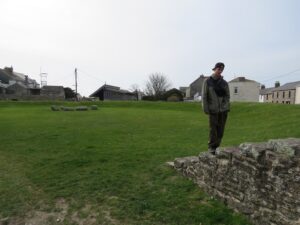
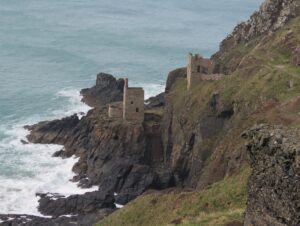
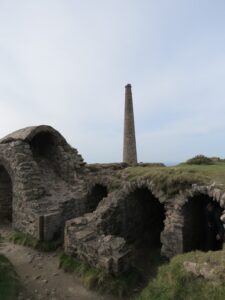
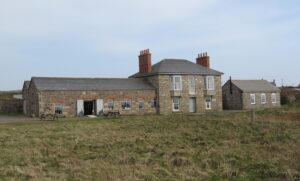
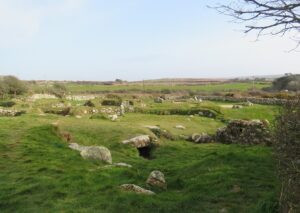
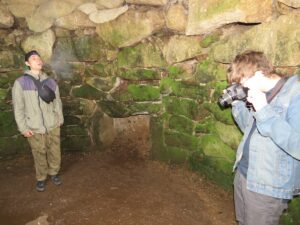
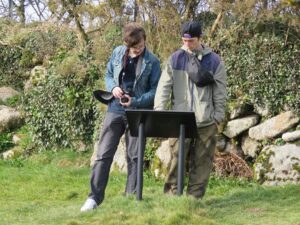
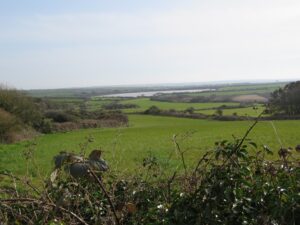
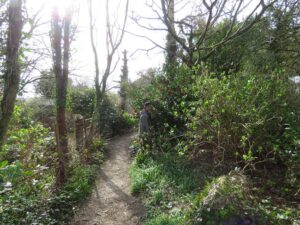
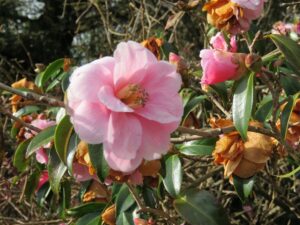
![[92] Voice - Ertach Kernow- 30.03.22A A Penwith Road trip [S] Ertach Kernow - A Penwith Road trip](https://www.cornwallheritage.com/wp-content/uploads/2022/04/92-Voice-Ertach-Kernow-30.03.22A-A-Penwith-Roadtrip-S-227x300.jpg)
![[92] Voice - Ertach Kernow- 30.03.22B A Penwith Roadtrip [S] Ertach Kernow - A Penwith Road trip](https://www.cornwallheritage.com/wp-content/uploads/2022/04/92-Voice-Ertach-Kernow-30.03.22B-A-Penwith-Roadtrip-S-225x300.jpg)
![[92] Ertach Kernow Heritage Column - 30th March 2022 - Fun in our town centres Ertach Kernow Heritage Column - 30th March 2022 - Fun in our town centres](https://www.cornwallheritage.com/wp-content/uploads/2022/04/92-Ertach-Kernow-Heritage-Column-30th-March-2022-Fun-in-our-town-centres-276x300.jpg)